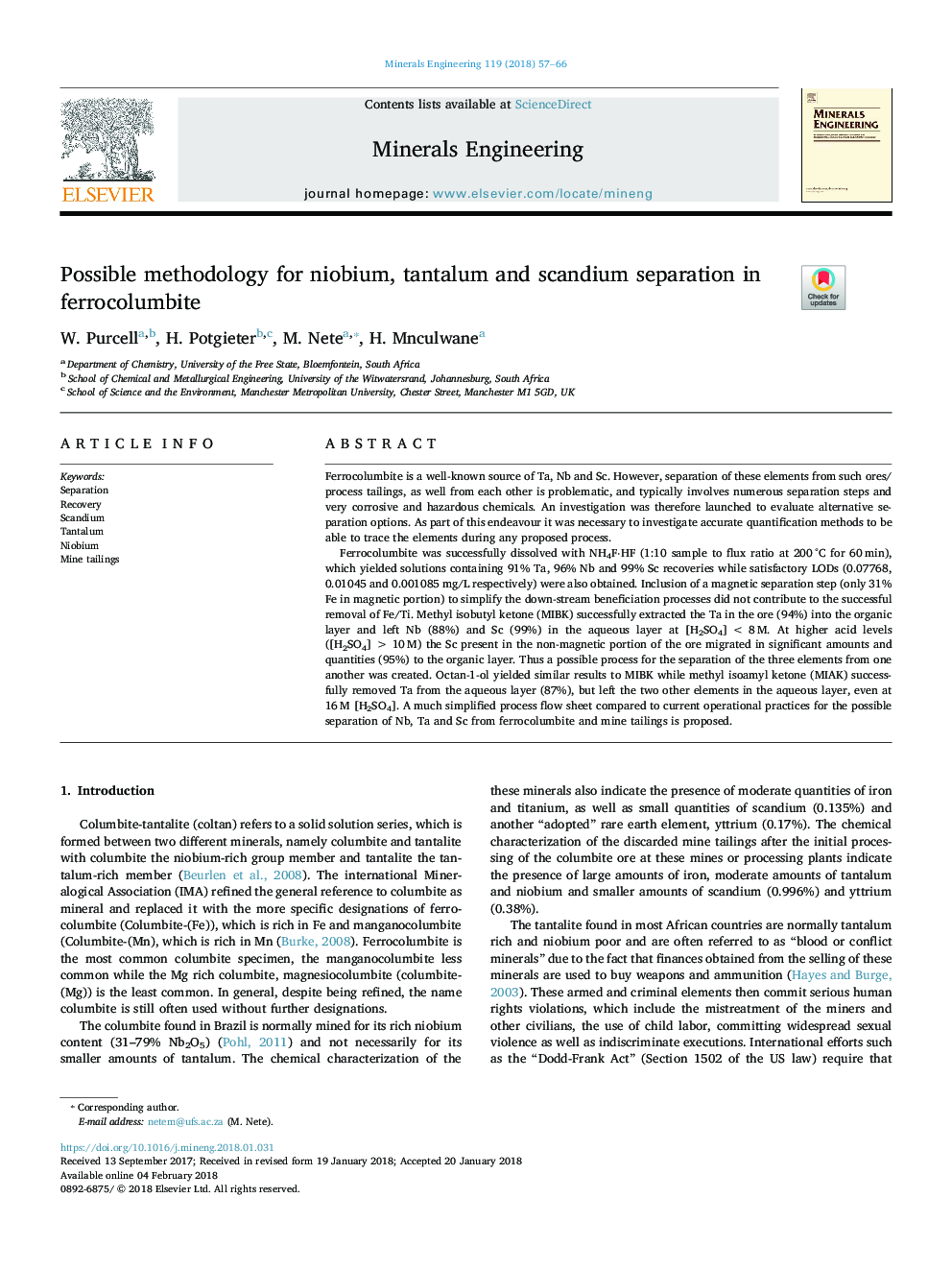| Article ID | Journal | Published Year | Pages | File Type |
|---|---|---|---|---|
| 6672473 | Minerals Engineering | 2018 | 10 Pages |
Abstract
Ferrocolumbite was successfully dissolved with NH4Fâ
HF (1:10 sample to flux ratio at 200â¯Â°C for 60â¯min), which yielded solutions containing 91% Ta, 96% Nb and 99% Sc recoveries while satisfactory LODs (0.07768, 0.01045 and 0.001085â¯mg/L respectively) were also obtained. Inclusion of a magnetic separation step (only 31% Fe in magnetic portion) to simplify the down-stream beneficiation processes did not contribute to the successful removal of Fe/Ti. Methyl isobutyl ketone (MIBK) successfully extracted the Ta in the ore (94%) into the organic layer and left Nb (88%) and Sc (99%) in the aqueous layer at [H2SO4]â¯<â¯8â¯M. At higher acid levels ([H2SO4]â¯>â¯10â¯M) the Sc present in the non-magnetic portion of the ore migrated in significant amounts and quantities (95%) to the organic layer. Thus a possible process for the separation of the three elements from one another was created. Octan-1-ol yielded similar results to MIBK while methyl isoamyl ketone (MIAK) successfully removed Ta from the aqueous layer (87%), but left the two other elements in the aqueous layer, even at 16â¯M [H2SO4]. A much simplified process flow sheet compared to current operational practices for the possible separation of Nb, Ta and Sc from ferrocolumbite and mine tailings is proposed.
Related Topics
Physical Sciences and Engineering
Chemical Engineering
Chemical Engineering (General)
Authors
W. Purcell, H. Potgieter, M. Nete, H. Mnculwane,
